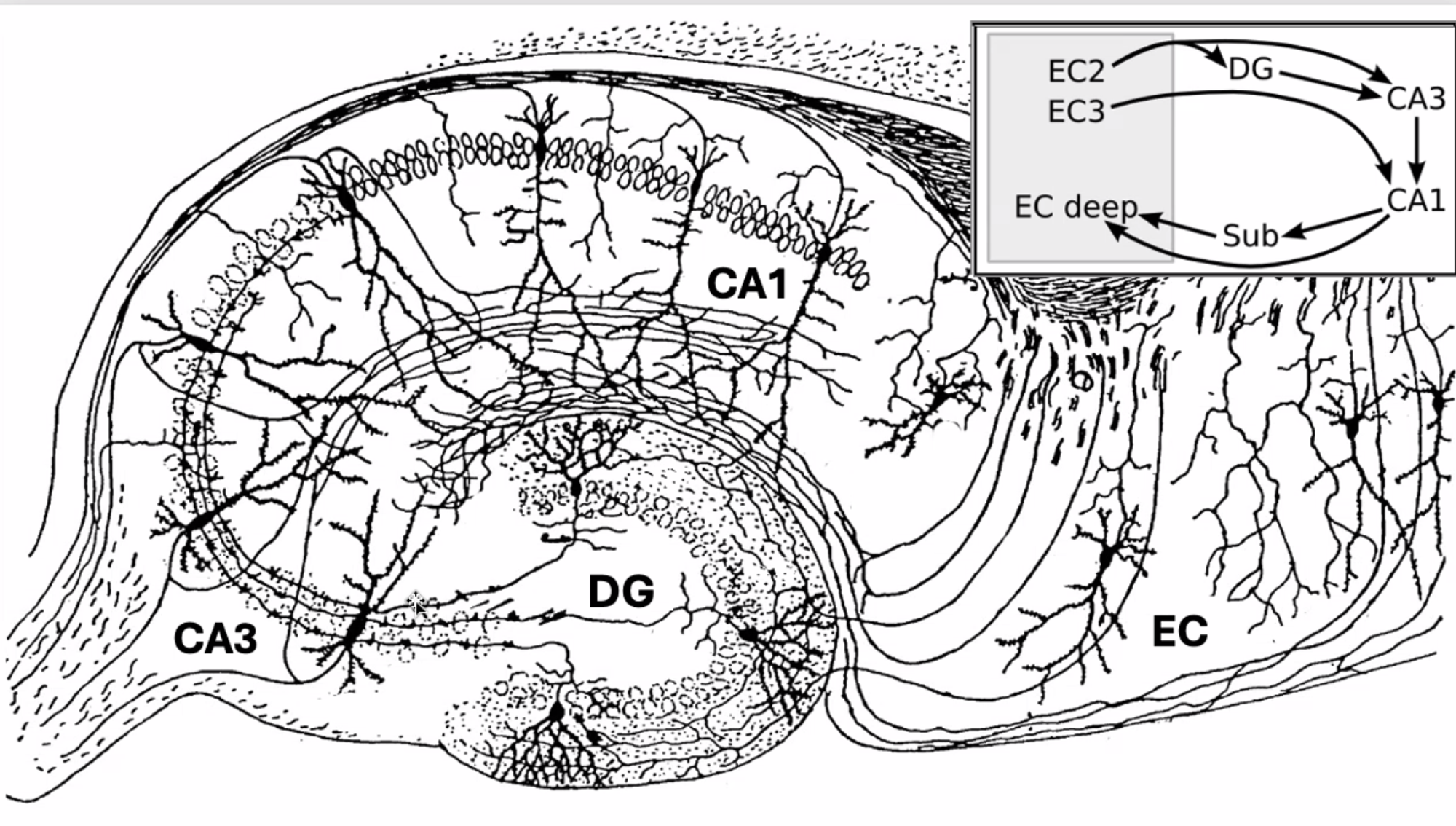Seung Lab is pleased to unveil our newest dataset for connectomics research, which may also become our (first) official dataset for Pyr!
This isn’t our first time working with a mouse brain, but unlike our recent visual cortex dataset known as Minnie, we’re now diving into the hippocampus, which is the brain’s memory center! This is one of the first regions attacked by Alzheimer’s and temporal lobe epilepsy, and hippocampal damage is likewise associated with various forms of amnesia. Connectomics research here could be particularly valuable for helping to prevent or reverse such conditions; and this work may also help humanity answer many age-old philosophical questions about how our memories form, persist, or disappear.
What is the CA3 dataset?
Prepared by Zhihao Zheng, this dataset is currently the largest available from a hippocampus, measuring roughly 850 x 850 μm along the x and y planes, and 1300 μm along the z plane except for a 40 nm section that reaches 2100 μm.
CA3 refers to the region that serves as the “end” of the hippocampus’ information flow; signals pass from the entorhinal cortex (EC) through the dentate gyrus (DC) and then to CA3 before looping back around. We’re interested in CA3 because compared to the rest of the hippocampus it has the most synapses between excitatory neurons, which makes it the most promising region to analyze how memories are stored.
How do CA3 cells compare with cortex cells?
Pyramidal cells perform the key excitatory role in the hippocampus as well as in cortex. So if you’ve previously encountered datasets like Minnie, cell morphology in CA3 will be familiar. However, there are a few key differences:
- The proximal part of the apical dentrite is quite big.
- The soma is also relatively big.
- Boutons from the dentate gyrus are also big.
Essentially, pyramidal proportions are distinct in this region of the brain. Bear in mind also that as far as researchers can tell so far, there’s likely only one type of excitatory cell in CA3, so little classification may be needed.
As always, no dataset is perfectly collected so in CA3 you will still encounter missing slides. However, usually the largest “blacked out” sections still comprise no more than 4-5 slides; so with some practice it may be possible to proofread beyond such gaps.
Getting help with CA3
If you need help orienting yourself further in the dataset or have questions about specific cells, there are a few ways you can reach out to someone on our staff.
For tracers on the 611 team, currently the best option is to post in the FlyWire Forum on Slack, like your colleagues handling the BANC.
For citizen scientists helping us alpha test our new game Pyr, if you also have FlyWire Forum access for the BANC you can ask questions there, but either way you can also e-mail support@eyewire.org and one of the usual GMs will get back to you.
We wish you luck in this exciting new dataset!


